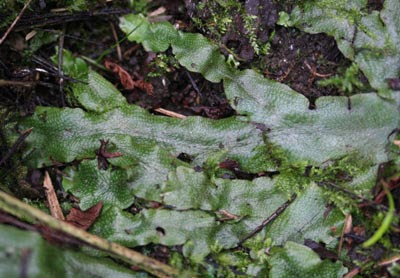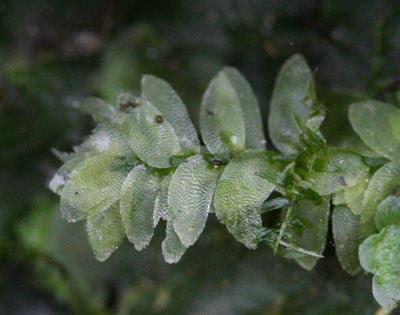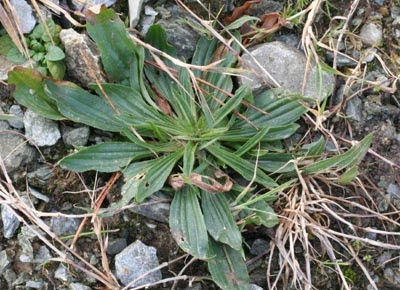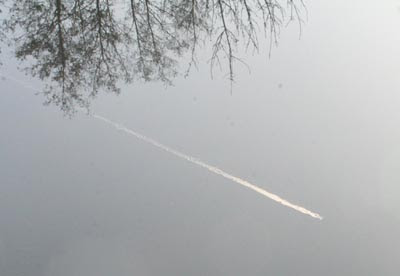Liverworts are fascinating little plants that can be found on the back wall of ditches, on damp walls and hidden in rock crevices, woodland paths and tree-trunks : anywhere that it's fairly dark and damp.
Thallose liverworts are easy to identify: they are ribbon-like with a flat main structure (thallus). This is
Conocephalum conicum, showing the lizard-skin-like thallus which readily identifies it.
(Width of thallus about 10mm):

And here's a habit shot, specimen about 10cm. long:

Leafy liverworts are more difficult to separate from mosses without magnification. This wonderful specimen is
Plagiochila porelloides, with the main 'stem' in the foreground being about 12mm long.

You really do need to get a magnifying glass on these to identify them as liverworts, and you need higher magnification to identify them to species. The leaves are often very complex, with folds and pockets, presumably to retain water if their source dries out.
Having said all that, what about this one?

Well, just to complicate things, this is a moss:
Hookeria lucens. The leaf cells are so large you can see them with the naked eye. Specimen shown about 15mm long.
So what differentiates a liverwort from a moss? The defining difference is in the rhizoids (root-like structures used to grip the substrate). In mosses these are multi-cellular, but in liverworts they are single-celled structures. That's all very well under the microscope, but in the field we have to use a combination of features, such as leaf arrangement, leaf lobing (no mosses have leaf lobes), presence of thallus and shape of reproductive organs, if visible.































